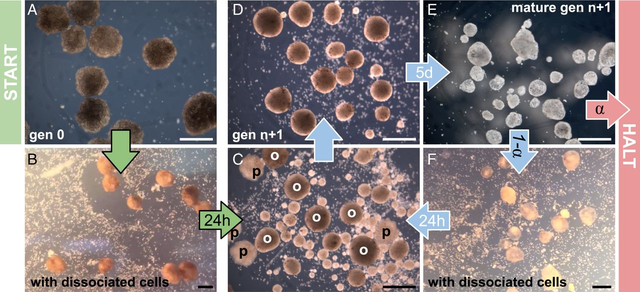The US scientists who created the first living robots say life forms, known as xenobots, can now reproduce – and in a way not seen in plants and animals. Made up of the stem cells of the African clawed frog (Xenopus laevis), from which it takes its name, xenobots are less than a millimeter (0.04 inch) wide. The tiny pimples were first revealed in 2020, after experiments showed they can move and work together in groups and heal themselves.
Now, the scientists who developed it at the University of Vermont, Tufts University and Harvard’s Wyss Institute for Biologically Inspired Engineering say they have discovered an entirely new form of biological reproduction unlike any animal or plant known to science.
“I was surprised by this,” said Michael Levine, professor of biology and director of the Allen Discovery Center at Tufts University, who is the co-lead author of the new research. “Frogs have a method of reproduction that they normally use, but when they release[the cells]from the rest of the embryo and give it a chance to figure out how to be in a new environment, they don’t just figure it out” they found a new way to be. It moves, but it also seems to have discovered a new way to reproduce. “
This new form of reproduction causes xenobots to actively collect loose stem cells, aggregating them into mounds that can then mature into xenobots.
After realizing that the shape of the xenobots was holding them back, the researchers used artificial intelligence to test a variety of new body shapes to maximize stem cell harvesting. The C-shaped AI is reminiscent of the famous game character, Pac-Man.
“Artificial intelligence hasn’t programmed these machines the way we normally think about writing code. It shaped, sculpted and came up with the shape of a Pac-Man model,” said the study’s lead author, Josh Bongaard – a professor of computer science and robotics expert at the University of Vermont. , is the program. Shape influences how xenobots behave to amplify this incredibly amazing process.”
Although the idea of self-copying machines is reminiscent of names like Terminator In the future and other films like him, Researchers are sure that these robots are in the lab, are biodegradable, and are easily extinct. But the discovery of self-replicating robots opens up a whole new world of possibilities. A little more useful than The robot proposed by Elon Musk.
“A lot of things can be achieved if we take advantage of this kind of plasticity and the ability of cells to solve problems,” Bongard said. The study was originally published in PNAS Scientific Journal audit by pairs On November 20, 2021.

“Coffee trailblazer. Social media ninja. Unapologetic web guru. Friendly music fan. Alcohol fanatic.”


